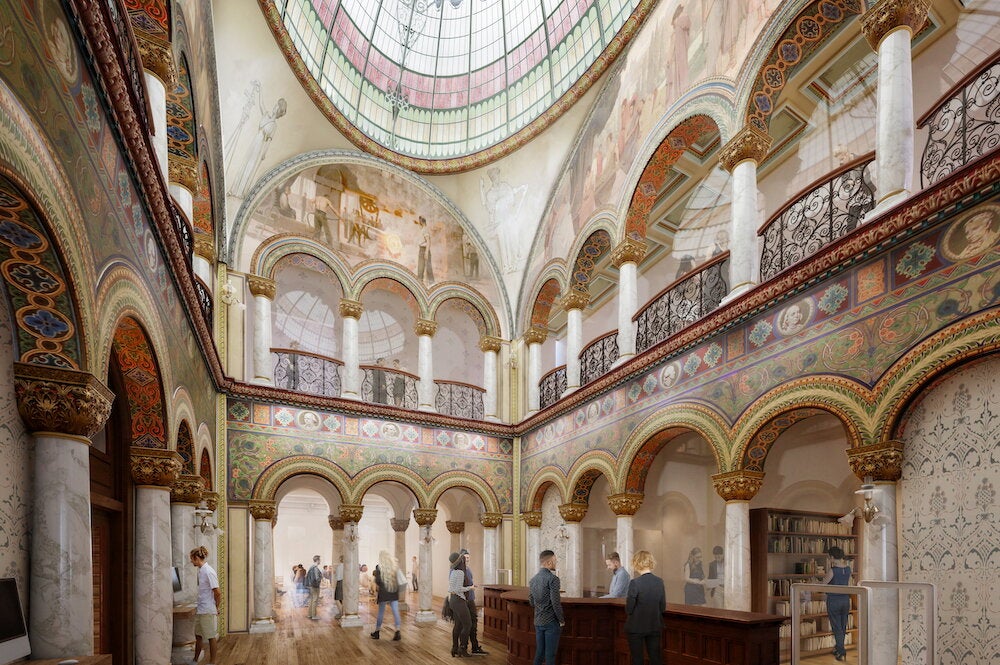

The slabs of sandstone that make Altgeld Hall one of the most recognizable buildings on the University of Illinois Urbana-Champaign campus have been covered in scaffolding for months. But the results of the renovation work going on there are apparent, as the dark gray stone is restored to a pinkish hue.
Standing near Altgeld, I can see workers high on the scaffolding, cleaning the stone, and I hear hammering coming from the roof. The work is part of a multiphase project managed by the Illinois Capital Development Board that includes exterior and interior restoration of the building. The current phase of the project involves renovation of the building’s facade, structural improvements to the bell tower and restoration of the chimes system.
The last major renovation work at Altgeld Hall was in the 1950s, when the math department moved into the building. “Combined with continued enrollment growth and expanded usage, comprehensive exterior and interior upgrades were necessary to modernize the facility with new learning and research spaces while conserving and revitalizing the building’s historical features,” says Kevin Price, the capital construction project manager for Facilities & Services.

“The renovation of Altgeld Hall will mark the rebirth of one of the campus’s most storied and iconic buildings. The facility, which opened in 1897, was instrumental in the university’s early growth, and this project ensures that its legacy will continue,” Price says.
Every detail of the work has been carefully planned to protect the 127-year-old building and ensure repairs are historically accurate. Project manager Travis Schiess and preservation manager Sarah Horton of Berglund Construction, the firm serving as the construction manager for the project, lead me and photographer Fred Zwicky on a tour of the construction site. Workers are cleaning the sandstone and replacing all the mortar, which is deteriorating.
Schiess says the dark color of the stone is partly the result of soot from a coal-fired power plant that at one time operated just north of Altgeld Hall, near the current engineering quad. Other industrial sources, including a foundry in the area, and wood-burning fireplaces in several campus buildings likely contributed as well. He points out the difference between the dark gray stone on the original north-facing portion of Altgeld, built in 1896, and that on the newest addition on the southeast, built in 1956.
“On this side (of the 1956 addition), it looks like it’s already been cleaned, but it hasn’t. This was built after the coal-fired plant was no longer in service,” Schiess says.
Masons use natural bristle brushes to scrub a gentle, non-abrasive commercial cleaner onto the stone to clean it. Then they rinse it off and test the pH levels of the stone to make sure no cleaner remains. The porous sandstone could absorb the cleaner, which would start to eat away at the stone, Horton says.
The heaviest deposits of soot and grime are scrubbed off, but the workers don’t remove every bit of black from the stones.
“Once the project is complete, you will still see some patina on the stones. The goal is to remove the heaviest build up, while not causing damage by using overly aggressive chemicals. The best practice for restoration cleaning is to use the gentlest means possible,” Horton says.
Editor's note: This is an abbreviated version of the original News Bureau story. Read the full story and view more images here.


